Ever get marketing emails in your inbox and think, “do people still read these?” or were you wondering how to grow your email list as a means to increase sales and website traffic but wondering if it is worth it? You are in for a surprise.
First, A Little Background And Some Numbers:
Email marketing is perhaps the oldest tool in the digital marketing industry. It is a promotional campaign strategy where emails are sent to a group of people who have agreed to receive your emails for commercial purposes. Marketing emails are used by businesses to grow leads, increase sales, creating and grow brand and product awareness. Is it still an effective marketing strategy for these goals? Emails are everywhere and it is estimated that in 2021, 319.6 billion emails were sent and the number is expected to be 333.2 billion in 2022.
While optimizing your website search engines, having a strong social media presence is also a mandatory part of any digital marketing campaign, emails still return more in terms of revenue per investment when compared to them. So it is not surprising that marketers use emails as their primary lead capture tool. The pandemic has reinforced the importance of email marketing and even the industries that have lagged till recently have started marketing via emails, and personalization is the recent rage.
It is not just the sheer number of emails that make it an effective marketing medium though. With emails directly reaching prospective customers, marketers using email marketing bypass the necessity to play by the rules of social media platforms and search engines.
In this blog, let’s cover the basics like the common difficulties in creating an effective email marketing campaign and how to reach your business goals with it.
Low-Effort Marketing Emails Are, Well, Bad For Your Campaign:
Marketing emails don’t equate to annoying the recipient. People like getting useful and targeted emails that are relevant to their interests and end up buying a lot of things through well-made promotional emails to the point that once again, I have to cite some figures. Emails are 40 times effectual in gaining new customers than social media and bring 44 dollars for every dollar spent on them.
Despite the stats, you’ve most likely received emails that you couldn’t be bothered to open. Be it the competitive nature of marketing emails to building a suitable audience, it is not an evening’s work. It’s not all gloomy though, let’s see “the how to’s” of building a successful campaign despite these issues.
Etiquette Matters
When a user signs up for your emails, they have taken the things you offer into consideration and expect value in their inbox. It is an opportunity to build a relationship with them by providing that value in form of educational newsletters, personalized product promotion, obtaining feedback to see what they want, and further optimizing your email marketing strategy.
In the long run, a successful email campaign is an investment that focuses on benefitting the customer primarily, with the goals and targets of businesses taking the backseat.
Email Marketing Done Right
I’ll explain further with a few email marketing templates and their use cases.
Welcome Emails
Welcome emails are an easy way to get an email campaign started. Whether a user signed up to buy a product, or download a giveaway on your website, or expressly signed to receive newsletter emails, welcome emails can be used as a way to introduce your brand and show the services the user gets from your business. A welcome email may also contain a product walkthrough, or provide answers to the questions new users frequently get. Look at the template below;

This template is quite comprehensive. The business is offering early offers and exclusive deals to early subscribers. In addition, it offers them a discount code for their next purchase. Now, this is the kind of deal any user would like to get in their inbox.
Winback Emails
Winback emails can persuade users into engaging with your business again. Tact is needed here, a friendly message inquiring if they would like to check out new products you have, or feedback or a survey to help you understand what customers are looking for. Bonus if you offer an incentive if the inactive user takes an action because of your win-back email.
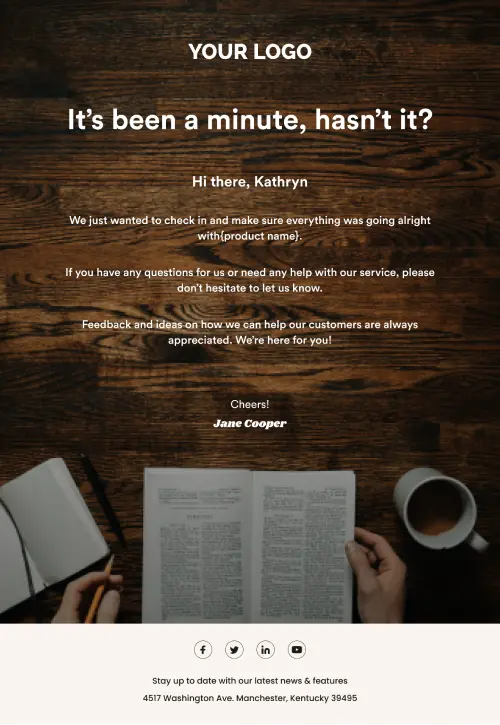
Emails To Introduce New Features
On the other hand, there are returning and loyal customers you have acquired and that audience doesn’t need as much persuasion. It is not easy to have such an audience, that can be described as a fan base, but consider Apple for instance. There is a hype built around all new products they make, and people start speculating what new features are going to be in the months before they are introduced. This can be a reference, scaled down to suit your size and type of business. Keeping loyal customers in the loop of what features or products your business is working on, or is introducing keeps them engaged and eager.
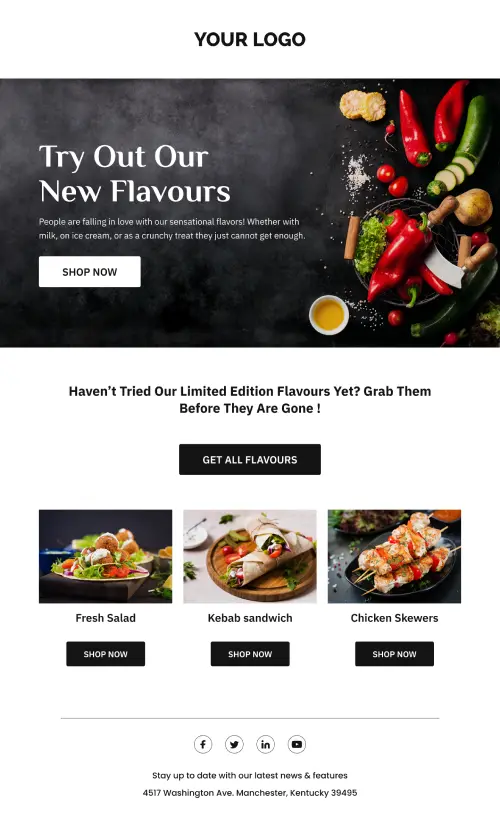
Post Purchase Strategy
As you must have gathered from the previous tactic, keeping your signups continuously engaged is vital in building and maintaining a solid customer base. An example of this is eCommerce email marketing campaigns. Emails you receive for order confirmation, shipping, delivery, etc are legitimate reasons to engage your customers and while the main intent is to inform them, you can also use it as a way to be in your customer’s inbox regularly.
Once Again, An Example
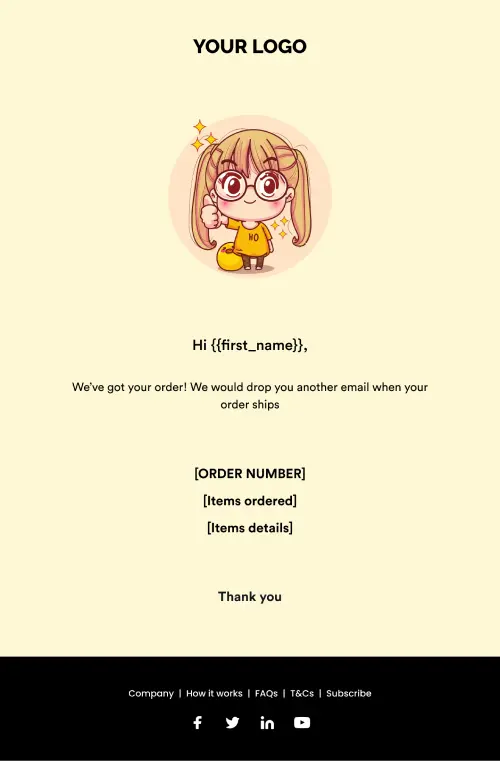
Post Purchase Reengagement
Another use of post-purchase emails is that they can be used to show customers similar products they might be interested in. This example is a use case of such an email pertaining to an eCommerce store, but it is suitable to a lot of industries and beyond transactional eCommerce emails.
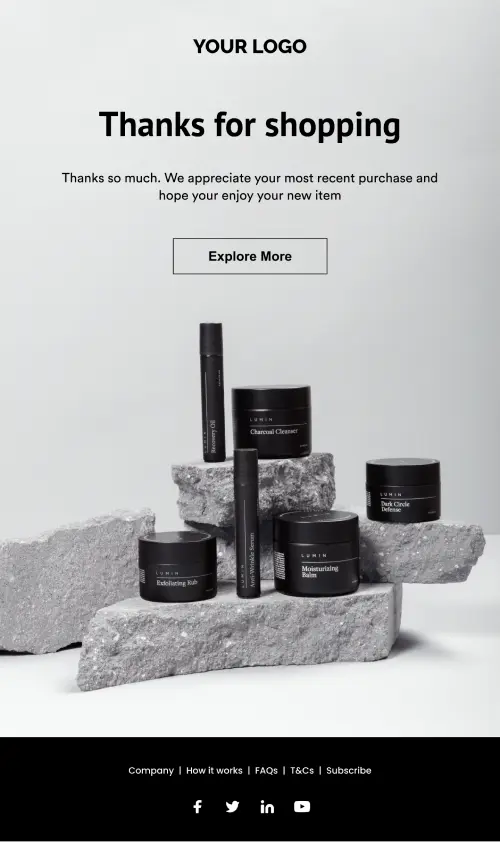
In a business dealing with products and services in multiple industries, you can use post-purchase emails to inform customers of other services they might be interested in.
Newsletter Emails
Newsletter emails are quite direct and straightforward. Businesses with strong SEO metrics and social presence, that is the ones with the best inbound marketing practices become established authorities in their field. In this case, brands leverage this reputation and promote educational and informative content catering to their field and also to their products. Newsletters are a beginning point in this approach that any business can adopt.
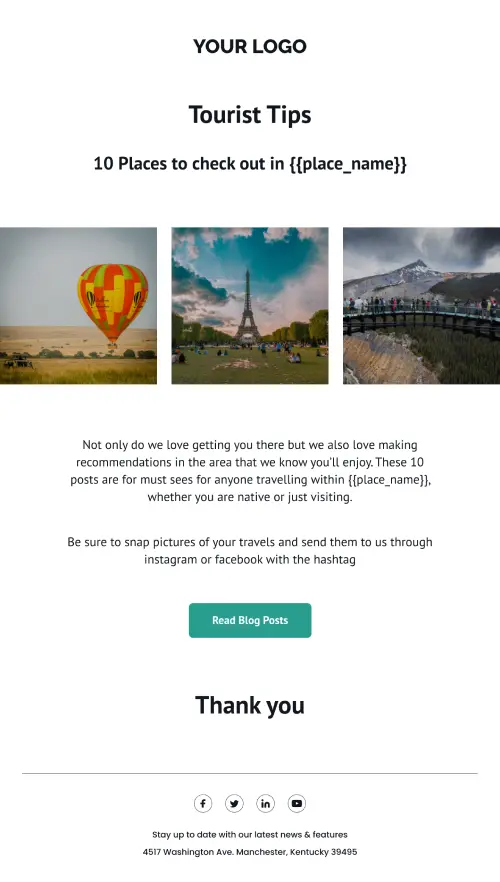
This email template is mixing a few of the methods we’ve seen till now. First, you are given a newsletter with recommendations of places to visit. Next, you are encouraged to share your work on social media, hinting at being featured in their next recommendations newsletter and invoking the reward for engaging element. Finally, there is a Call To Action button to read more and explore the blog posts of the website.
Email marketing is doable, it requires an investment of time and resources but the rewards of a successfully done email marketing campaign make it more than worth the effort, both in terms of monetary return and building your business’s reputation and value as a whole. I can give you more examples, figures to back it up, keep reading our blogs to learn more, but you can get started with your first email campaign now here.



